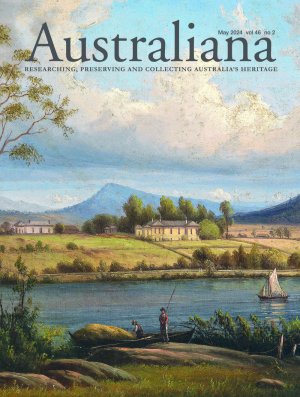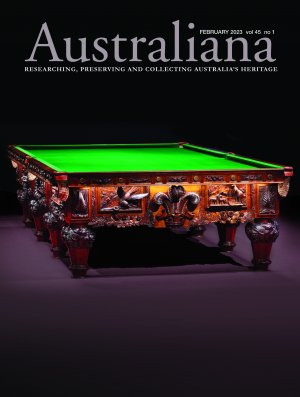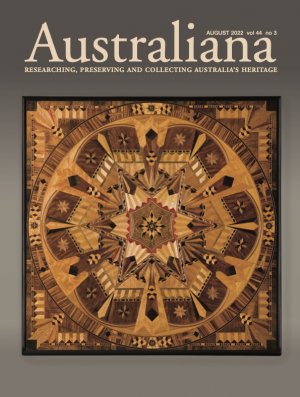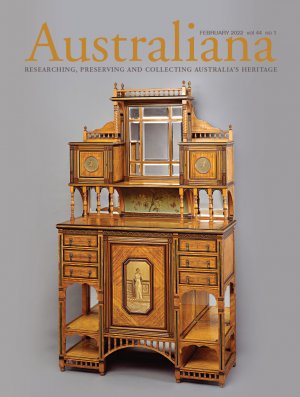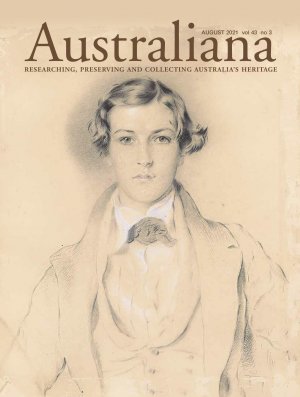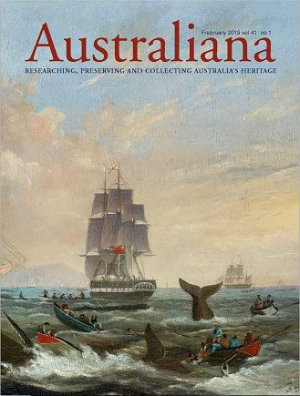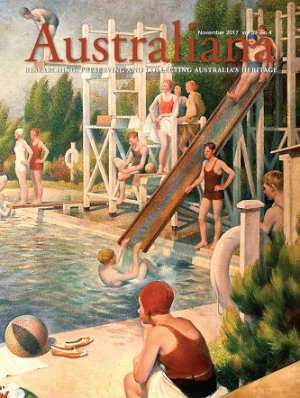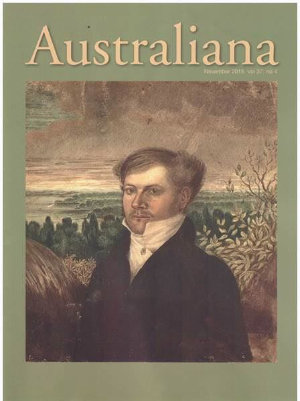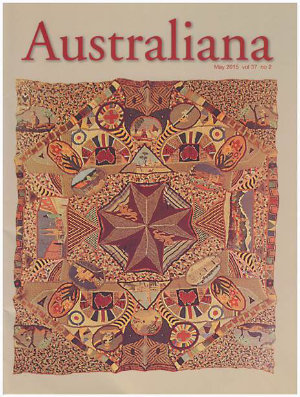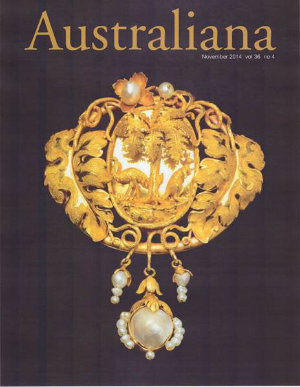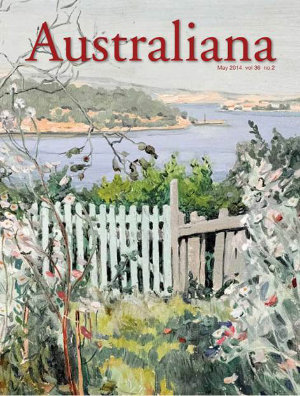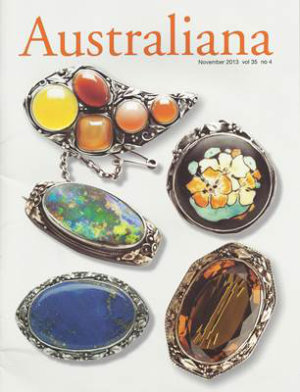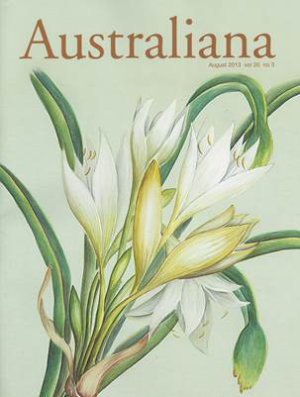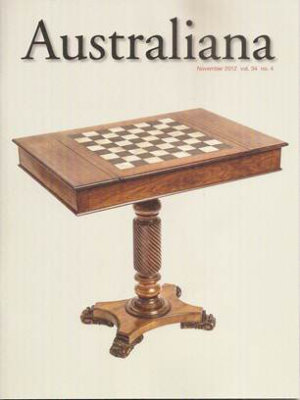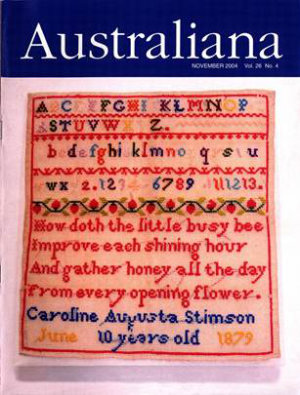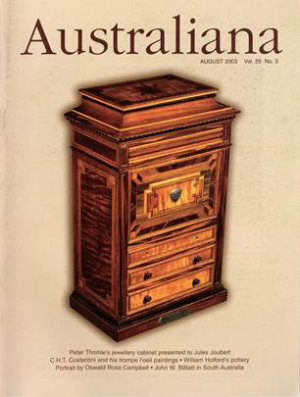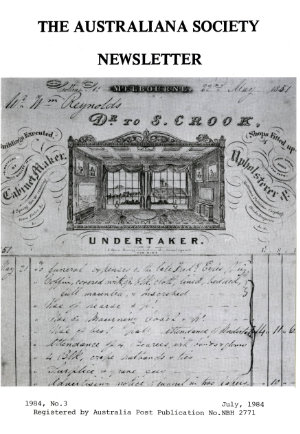Bill Lowe argues that a silver mug engraved with initials, probably as a christening present, and bearing pseudo-hallmarks and maker’s initials ‘JF’, was most probably made in Hobart by Scottish-born convict silversmith Joseph Forrester, when he was in business there on his own account in the early 1840s....
The National Museum of Australia in Canberra has purchased an Australian billiard table, carved in high relief with multiple panels of scenes of colonial life, and its matching marking board. Its price of $1,100,000 sets a new record for a piece of Australian furniture. The NMA is not known for collecting Austr...
As part of their education in useful arts, schoolgirls sewed their own individual samplers, which are also important indicators of progress in educational methods and reach. The format is fairly standard, with the letters of the alphabet in either or both lower and upper case and basic numbers, plus the gi...
In the aftermath of World War II, many commercial potteries were established in Australia to satisfy the market disrupted by hostilities, particularly for Japanese and European imports. While some of these new commercial potteries were established by immigrants from war-ravaged Europe, Henning Alfred Rathjen (1...
A sampler, and the von Stieglitz family Bible in which it was kept for many years, were sold at auction in Launceston in 2016. The sampler consists of stitching on a square of linen cloth 6 inches (15.2 cm) in width by 61⁄2 inches (16.5 cm) in length, edged with blue ribbon (plate 1). The stitches used are la...
David Scott Mitchell (1836 –1907) had a private income which allowed him to pursue his collecting and become the greatest Australiana collector. About a century after British settlement, Mitchell identified the need to collect Australiana that was, at the time, rapidly disappearing. His collection of somewher...
... Tamie Fraser was one of the first to realise the same could be done here to reflect our own culture and history. In 1978, she encouraged the establishment of The Australiana Fund (not to be confused with the Australiana Society, established in the same year), with the aim of lending appropriate examples of ...
Edinburgh-born John Carmichael arrived in Sydney in 1825, living and working there for over 30 years producing landscapes, portraits, maps, billheads, musical scores, illustrations and some of Australia’s first postage stamps. His works provide a revealing and valuable record of life and times in colonial Syd...
A collection of flower paintings by Adrian Feint, belonging to his friend and fishing companion Les Godden, came to light last year when they were sold at auction. Catriona Quinn researches the background of this collection, the work of Adrian Feint and his artistic friendships.
Another of the talented women artists who came to the colony of Western Australia was Annie Purnell. She was not a professional artist, but the “Angel in the House” for her bachelor brother, the Anglican minister the Reverend Robert Purnell. As was typical of gentlewomen of the time, she would have been tra...
This spectacular exhibition of jewellery spanning cultures and millennia is billed as the most ambitious jewellery exhibition the Powerhouse Museum (part of the Museum of Applied Arts and Sciences) has ever staged. With 700 exhibits drawn from public and private collections across Australia, it takes several vi...
Our first event after the last AGM was the show-stopping evening at the Mitchell Library to view the Macquarie collector’s chest, the Dixson collector’s chest and the Wallis album with Elizabeth Ellis and Richard Neville. This was one of the very best events that I can remember, with the unique opportunity ...
London being London, many wonderful and stimulating exhibitions were on when we visited in September – October 2013. They are worth recording here to remind us of the importance of mounting exhibitions aimed at stimulating the audience rather than pandering to a market.
